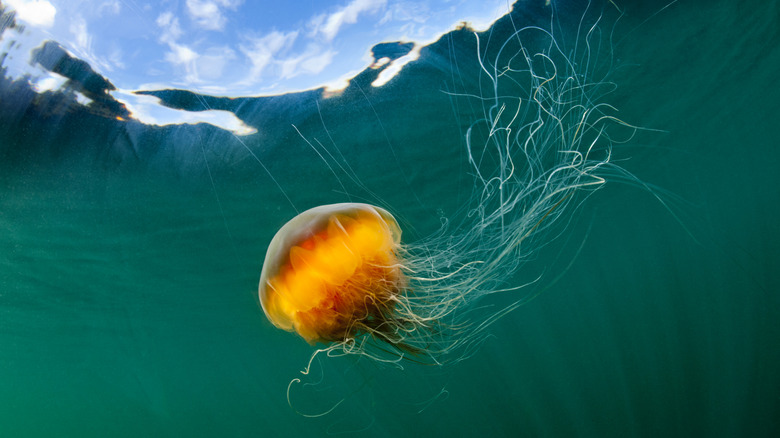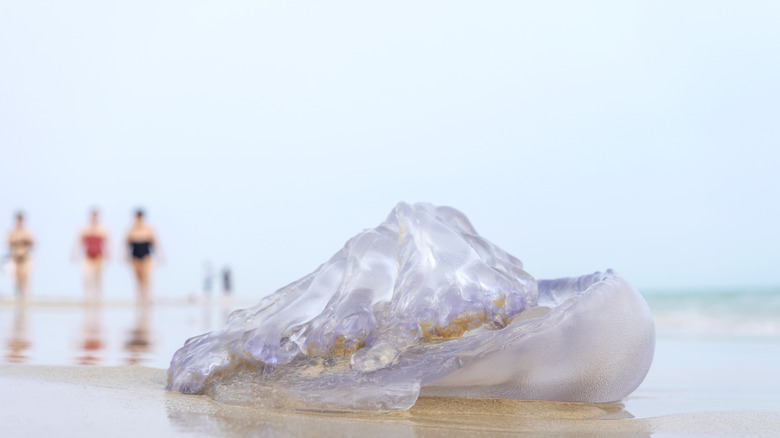Know How To Easily Spot Jellyfish During Your Next Trip To The Ocean
A jellyfish sting is a sure-fire way to ruin a day at the beach. Those who live or spend considerable time in coastal areas are likely familiar with these hazardous oceanic creatures and the pain they can inflict. Those who spend less time on the coast may not be able to recognize jellyfish as quickly. However, given there are over 2,000 different species of jellyfish, it's unlikely anyone is familiar with them all. Even though a small fraction of those are dangerous types of jellyfish, it is best to treat every jellyfish as capable of delivering a painful sting.
It is equally important to know how to easily spot jellyfish during your next trip to the ocean. The vast majority of jellyfish, whether dangerous or not, have a body that can be described as bulbous, bell-shaped, or balloon-like. They may vary tremendously in size and color, although most are transparent to some degree. The shape of their body may also vary somewhat, from round to almost square, as is the case with the very dangerous box jellyfish.
A good number of jellyfish have tentacles that trail behind their bodies. These tentacles are meant to catch prey and are equipped with small barbs which contain venom. Coming in contact with these tentacles is how people end up getting stung. At times, the tentacles can be seen on the surface. This is a helpful way to spot jellyfish at times when they aren't able to be seen below the water's surface due to turbidity or murky water conditions.
What to do if you spot a jellyfish
So, what do you do if you spot a jellyfish? The simple answer is, stay away. Jellyfish are capable of stinging whether they are in the water or washed up on the beach. While curiosity may draw you to the creature, given that some species have tentacles extending as much as 100 feet from their body, it is best to stay as far away as possible. If you are in the water, try to move around and cross the path of the jellyfish in front of it, so you can avoid the trailing tentacles. Covering up with a wetsuit or long-clothing while in the water or using Safe Sea anti-jellyfish lotion can help avoid being stung while in the water.
If you find one washed on the beach, just walk around it. Some species, such as the Portuguese man o' war (which isn't actually a jellyfish even though it is often associated with them and can deliver a painful sting), are very colorful and often tempt people to inspect them closer. Unfortunately, this often results in an otherwise avoidable sting. It is also important to keep in mind that a tentacle from a jellyfish or man o' war can still sting even if it is no longer attached to the body.
With that in mind, you should know what to do if you're stung by a jellyfish. Jellyfish sting first aid involves three steps. First, you should remove the tentacles and take out any barbs or pieces of the tentacle with tweezers. Then, you should soak the wound site in hot water for a half hour or so. Finally, apply an over-the-counter hydrocortisone cream to the area twice a day until it is completely healed.

